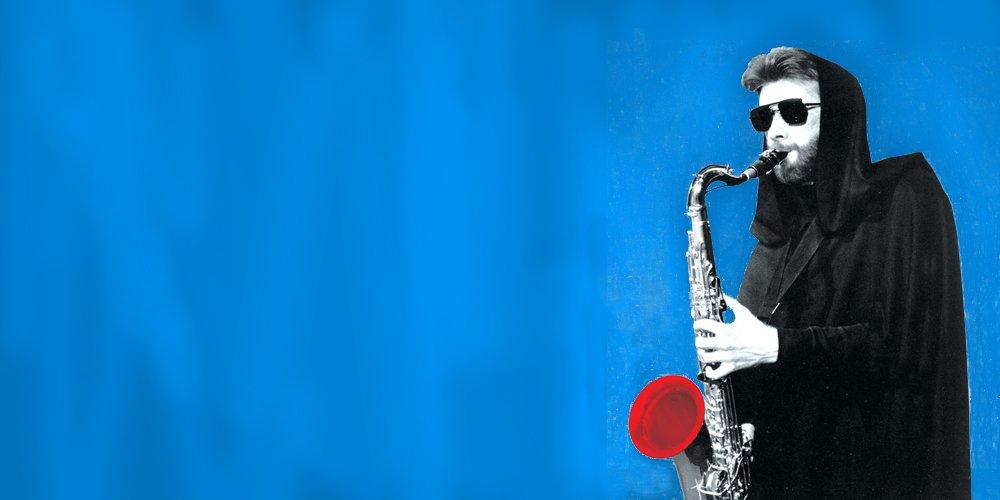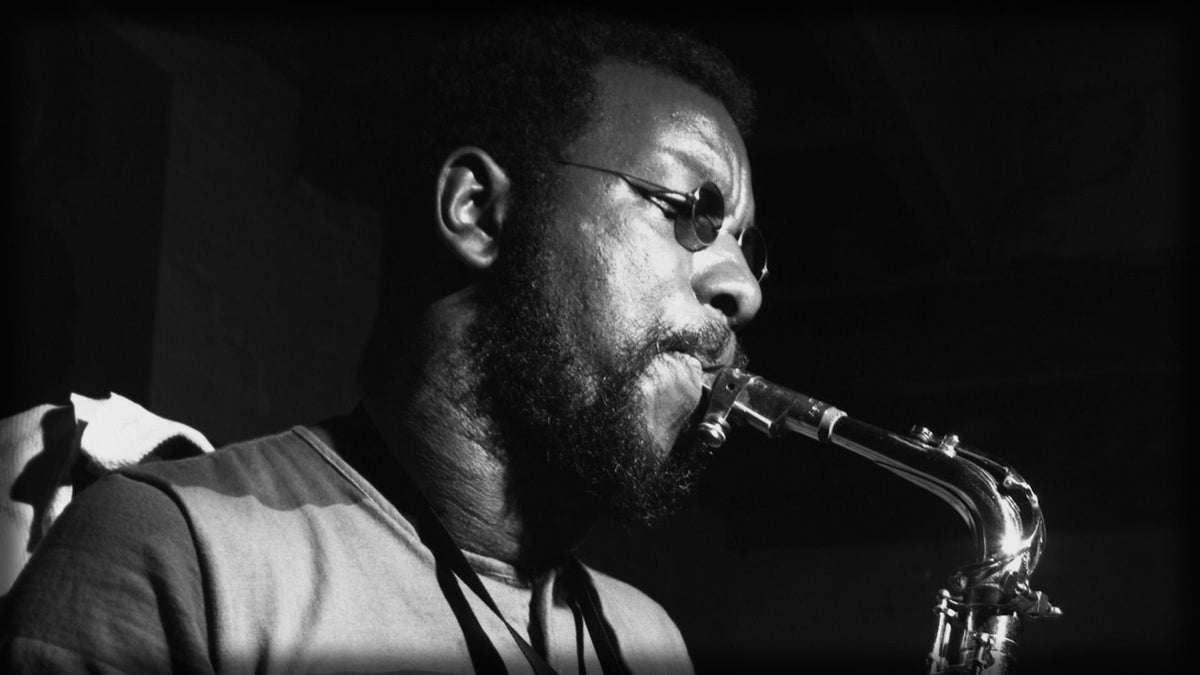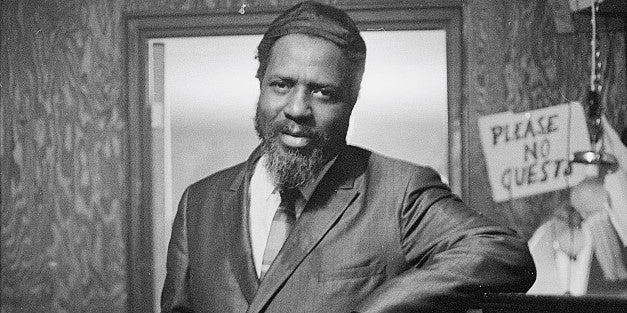An Art Ensemble Of Chicago Primer
A Guide To Getting Into One Of Progressive Jazz’s Best Bands
In 1965, Muhal Richard Abrams, Jodie Christian, Steve McCall, and Phil Cohran were threatened — and rightfully so — by the impending tidal wave of rock music. To fortify against this intrusion (and re-solidify community ties through artistic expression), the four jazz musicians, all born and bred in Chicago, founded the Association for the Advancement of Creative Musicians, a Black Mountain College aimed at cultivating progressive jazz, located in the heart of Chicago instead of the hills of Asheville, North Carolina. While the group never stopped the locomotive that was rock ’n’ roll, they sure as hell helped produce some outsized jazz talent, providing a platform for innovation and experimentation that’s seeped its way into every facet of modern jazz, and, with the current trend of homogenizing styles, most other genres as well.
While much of the collective is rooted in ’60s jazz, the scene has its veins spread wide: Henry Threadgill and Anthony Braxton were active participants, both of whom are still making wildly ambitious, experimental jazz music to this day. Jeff Parker, guitarist in Tortoise and outstanding solo jazz composer in his own right, is perhaps the youngest member of the group — still immensely active in the fascinating L.A. scene. Jack DeJohnette spent some time with the group as well, although the most famous group to emerge from this moment in history was the Art Ensemble of Chicago, a proper offshoot of the community as a whole.
The Ensemble officially formed in 1969, but iterations of the group played in bands together starting in 1966. During that year, Roscoe Mitchell (saxophone) formed a sextet with Lester Bowie on trumpet, Malachi Favors on bass, Maurice McIntyre on tenor sax, Laster Lashley wielding both the trombone and cello, and Alvin Fielder on the drums. In 1967, fellow AACM members Joseph Jarman (saxophone) and Phillip Wilson (drums) joined, with Wilson eventually leaving and the rest of the group traveling to Paris, where the band shifted from Mitchell’s project to an ensemble format.
The group’s discography is sprawling, with so many styles and iterations of free jazz, spiritual jazz, and experimental-leaning meditative music proliferating outwards in every direction. The group placed an immense focus on their live shows, which was highly improvised and a showcase of the cosmic connections between interlocking ace musicians. With such a vast, daunting discography, picking only 10 records from this famed jazz outlet is an impossible task, but here are a handful of albums you should start with (in chronological order). Albums unavailable on vinyl are ignored, although certain ones, like Art Ensemble of Chicago with Fontella Bass, are masterpieces.
A Jackson In Your House (1969) / Message To Our Folks (1969)
Although these two LPs were released separately in 1969, they’ve been re-issued as a pair on and off together since 2002, when the French label BYG Actuel put them out together for the first time.
The records were released just two months apart, and the albums feature the same Art Ensemble quartet, with Bowie on trumpet and percussion, Favors on bass, percussion and vocals, Jarmon on saxophone and clarinet and Mitchell on saxophone, clarinet, flute and percussion. This would continue to be one of the most consistent iterations of the group throughout their near 40-year history.
On Jackson, the group tag-teams various instruments, the eclecticism of their approach accented, each percussive instrument interacting with one another almost blindly — but somehow working to a powerful degree. Jackson blends traditional jazz tenants with more experimental tendencies prevalent in minimalism and avant-garde composition. The title track sounds like a warped mariachi band with howls and giggles emanating from all corners, while “Get In Line” is busy free-jazz at its finest — all squeaking horns, screamed drums and violent percussion that coalesces into an evil mess of anxiety and ecstasy.
Message To Our Folks takes a far more spiritual approach, with loose tambourines and abstract chants from Favors interacting with confirmations of “amen,” a call and response with the higher powers.
Tutankhamun (1969)
Recorded at the same time as Jackson, Tutankhamun (which Vinyl Me, Please is re-issuing) also features the same quartet. The LP was released by another French label, Freedom, just three days after Jackson made its way into the world. The record is almost otherworldly in its conjuring of avant-garde spirits, a two-track record (with recently unearthed bonus tracks) that moves from textural mysticism to laconically flowing horn-led grooves that don’t direct as much as illuminate a path forward.
The tracks almost work like films, rising and falling and rising again, each instrument perfectly in-step with the rest, yet wildly free within the improvisatory spirit of the group. The title track eventually grows to a menacing buzz that will certainly leave you spooked if you’ve got an allergy to bee stings, while “The Ninth Room” establishes and discards a grooving horn line in quick succession, giving way to a walking bass part and amorphous shapes spewed out from the dueling saxophones.
You can buy this album here.
People in Sorrow (1969)
I went to Paris once for a college course. I was there for four weeks and I ate a lot. I read some books, sure, but I mostly ate and saw things. During a four week span while the Art Ensemble of Chicago were residing there, they recorded and released a bucketload of albums, many of which are delightfully innovative and invigoratingly good. How cute. I bet I could put down more fromage, though.
It’d be one thing to release a bunch of haphazard, slapped-together records that all sound like each other during this period of intense creation, but People in Sorrow is another Art Ensemble LP that sounds staggeringly, almost disorientingly, different.
It’s sort of free jazz minimalism, sort of Buddhist monastery meets big band swing, entirely Art Ensemble. The one thing that becomes clear with all of these staggeringly variant releases is that the only true through line that runs from Point A to Point B of the Art Ensemble’s discography is a disdain for stasis and repetition.
Live in Paris (1974)
Recorded in 1970 but not released in 1974, Live in Paris is a seminal record because it showcases the group (with Fontella Bass and Don Moye featured on “Bon Voyage”) doing what they do best: playing live.
The record is massively sprawling, two 45 minute-plus tracks that are concerts in and of themselves instead of individual tracks making up a live disc. It’s a hard record to consume in one sitting, mostly because the band so stealthily and cleverly moves from section to section, rarely giving their audience a chance to catch up to what’s going on. The record is now divided into two discs, with “Oh Strange” and “Bon Voyage” each separated into two distinct sections. It certainly doesn’t make the album much more approachable, but if you find yourself with a free afternoon, give yourself over to it for 15 minutes and pretty soon you’ll realize it’s been 90.
Nice Guys (1979)
Welcome to ECM, you handsome men! Nice Guys is the group’s first album with the legendary jazz label, and they didn’t disappoint.
With all of these releases, it’s fascinating to note what was going on with other jazz music as the Art Ensemble was pushing records like nobody’s business from all corners of Europe and America. It’s wild to think of the group as a post-John Coltrane band, because so much of what they were doing was locked in with Coltrane’s cosmic wanderings, but they didn’t exist until two years after his death.
In 1979, Miles Davis wasn’t playing, Pharoah Sanders exited his fruitful relationship with Impulse!, Coltrane had been dead over a decade and Albert Ayler was dead as well. Plus, the ’80s were coming. The Art Ensemble emerged out of the AACM, a network that was established to thwart off the coming doom spelled out one guitar chord at a time by rock ’n’ roll’s takeover. If the collective smelled disaster in ’65, by 1979 the world they once knew was an unrecognizable apocalyptic wasteland.
But with Nice Guys (the group once again accompanied by Don Moye on drums, percussion, and vocals), it was eminently clear that the Art Ensemble had zero intentions of hanging it up, let alone offering the briefest clue that this thought ever crossed their mind. Nice Guys is one of their strongest mid-era releases, an extended funeral march that may be lamenting the death of jazz, contextual projection be damned. They stay weird as hell on the album, moving from deeply abstract minimalism and noise on “Folkus” to the frenzy of a circus on the loose “597 - 59.”
Full Force (1980)
With Don Moye now a full-time member, the Art Ensemble reached, well, full force, with the release of this 1980 LP (I’m so sorry to everyone for that, I truly am) recorded in West Germany. Full Force is widely regarded as one of the group’s best records, a five track affair that really coheres the various threads of experimentalism the quintet had been tweaking for years prior.
In 1980, ECM was filled with accomplished musicians, but very few occupied a territory similar to the Art Ensemble. In that same year, Chick Corea made a collaborative album with Gary Burton, Pat Metheny put out an LP, and Keith Jarrett put out two. But the free jazz terrain was ripe for exploration and in this environment the Art Ensemble truly thrived. “Magg Zelma” is both raucously freewheeling and precisely formed, while “Charlie M” begins as one of the most straightforward compositions they’ve ever recorded until the band is no longer able to restrain themselves any longer and blast off into oblivion, eventually landing upon a planet called Doom & Dread.
Urban Bushmen (1982)
Urban Bushmen was also recorded in Munich during the same time as Full Force, but not released for another two years. Bushmen is a real doozy within the Ensemble’s catalog, a two-disc, 10-track album that features songs ranging from four to 20 minutes.
The tenor of the album hones in on African drum rhythms backed by whistles-as-percussion (“Promenade: Cote Bamako I”), marrying the austere percussive underbelly of African tribal music with the more loosely grooving freedom of ’60s South American traditional music from Brazil.
Thelonious Sphere Monk: Dreaming of the Masters Series Vol. 2 (1991)
Perhaps the most divisive release from the band, Thelonious Sphere Monk finds the group morphing into a sextet, with Cecil Taylor jumping in on piano, vocals and percussion. This record comes courtesy of Japanese avant-garde label DIW Records, which the group would put out many records with.
This LP is one of the oddest tributes to Thelonious Monk ever penned, and critics were equally perplexed by the strangeness of the affair. Rolling Stone was enthralled, giving it four stars, while AllMusic was unamused, giving it 1.5. The AllMusic critic found a severe disconnect between Taylor’s style and that of the Ensemble, but I find the dichotomy to be enthralling, especially on the starkly beautiful rendition of “‘Round Midnight.”
Coming Home Jamaica (1998)
Another divisive record, it’s fun to recall the many ways the group was still ruffling feathers up until the very end. Their only LP for Atlantic, Coming Home Jamaica finds the band stripped back to a quartet, jamming out on lounge tunes that are almost sarcastically an outlier within the Ensemble’s discography.
“Strawberry Mango” sounds like a Hawaiian shirt, while “Odwalla/Theme” rides a grooving stand-up bass line and infuses the whole affair with a strawberry mojito vibe.
Coming Home Jamaica is so shockingly simple, so… un-Art Ensemble, that it gains a sardonic, subversive edge. The Caribbean-influenced music gives way to a joy never before wholly prevalent in the band’s music, belying a sort of understanding between the band and the jazz scene. Listening to the Art Ensemble was always intense work, a labor of love for moments of daring highs. On Coming Home, that disappears entirely; it’s time to have some fun.
Forever kings, forever weirdos, the Art Ensemble can do whatever they want. They spent almost four decades proving as much.
Will Schube is a filmmaker and freelance writer based in Austin, TX. When he's not making movies or writing about music, he's training to become the first NHL player with no professional hockey experience whatsoever.
Related Articles
Join the Club!
Join Now, Starting at $36Pages








